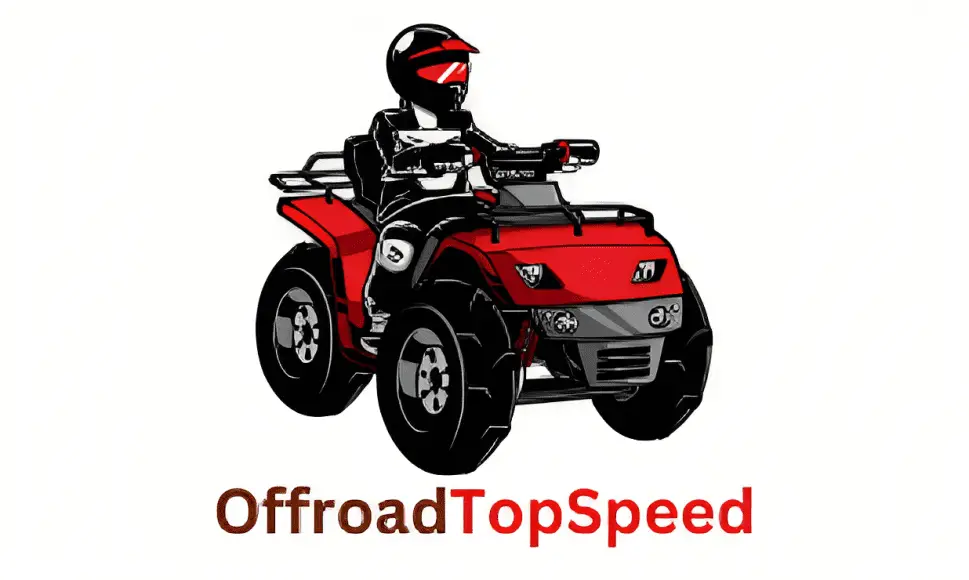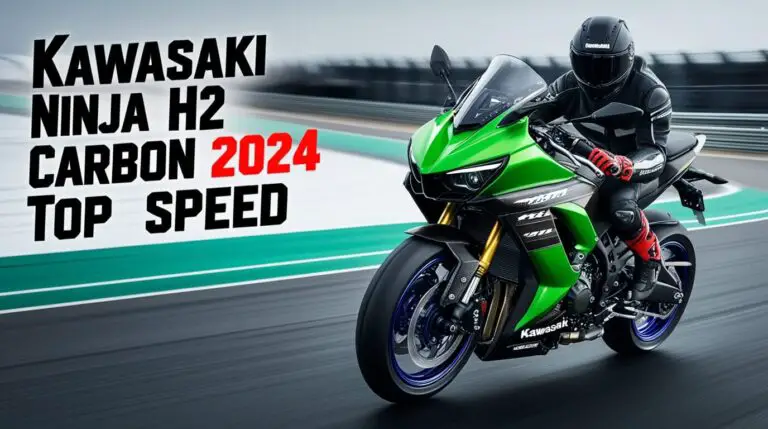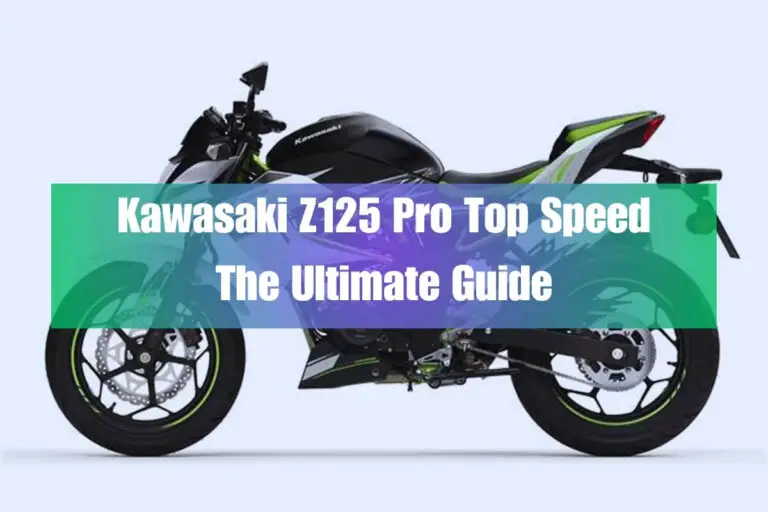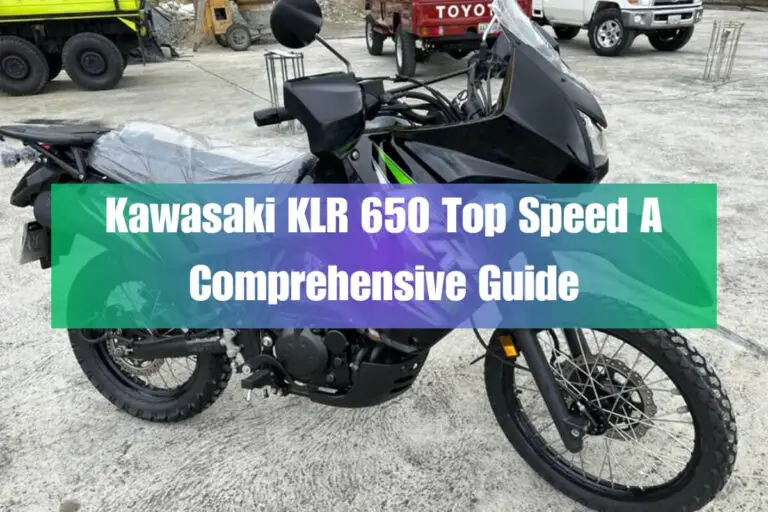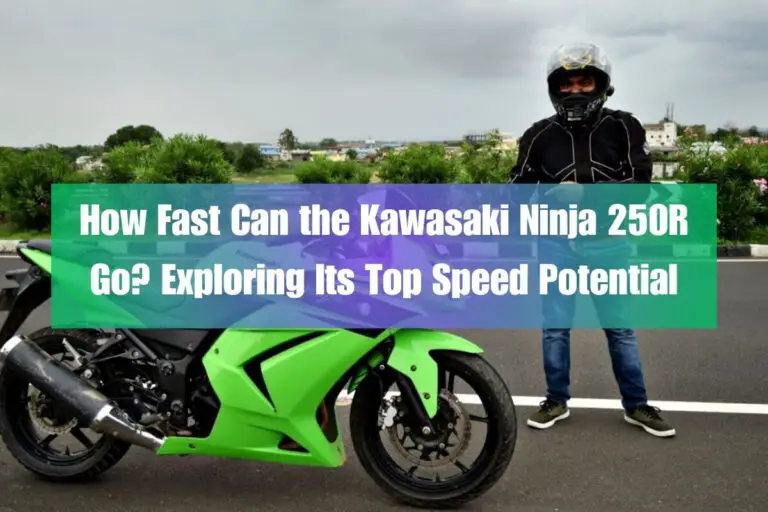Kawasaki Ninja 400 Top Speed & Acceleration: The Truth
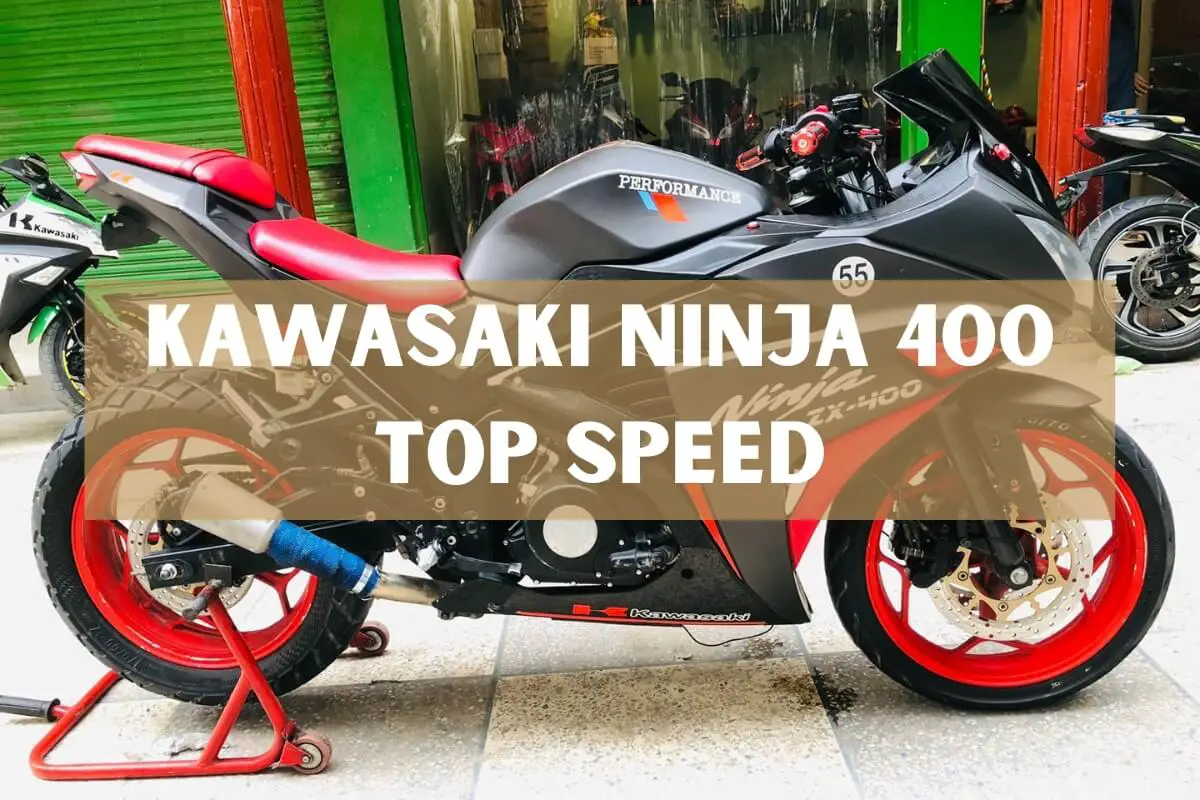
The Kawasaki Ninja 400 has earned rave reviews as an incredibly quick, confidence-inspiring middleweight sportbike perfect for slicing through city traffic or attacking a twisty canyon road. But how fast can the 399cc parallel-twin powered Ninja 400 really go when you twist the throttle?
With a tested top speed of 116.7 mph and 0-60 mph time of just 4.35 seconds, the Ninja 400 offers acceleration and high-speed performance to satisfy even experienced sport riders. Read on as we dive into the Ninja 400’s impressive powerplant and engine tuning, gearing, weight, and other factors that enable this little Ninja to achieve a thrilling top speed.
Kawasaki Ninja 400 – Key Specifications
| Spec | Detail |
|---|---|
| Engine | 399cc, Liquid-Cooled Parallel Twin |
| Power | 44.8 HP @ 10,000 RPM, 27 LB-FT @ 8,000 RPM Torque |
| Transmission | Six-speed |
| Top Speed | 116.7 mph |
| 0-60 mph | 4.35 seconds |
| Frame | Trellis, high-tensile steel |
| Suspension (F/R) | 41 mm telescopic fork, 4.7 in travel / Horizontal back-link, 5.1 in travel |
| Brakes (F/R) | 310mm disc, 2 piston caliper / 220mm disc, 1 piston caliper |
| Tires (F/R) | 110/70-17 / 150/70-17 |
| Seat Height | 30.9 in |
| Wheelbase | 53.9 in |
| Fuel Capacity | 3.7 gallons |
| Curb Weight | 366 lb |
| Colors | Lime Green/Ebony, Pearl White/Metallic Gray |
| MSRP | $5,499 |
Ninja 400 Engine Performance And Power Delivery
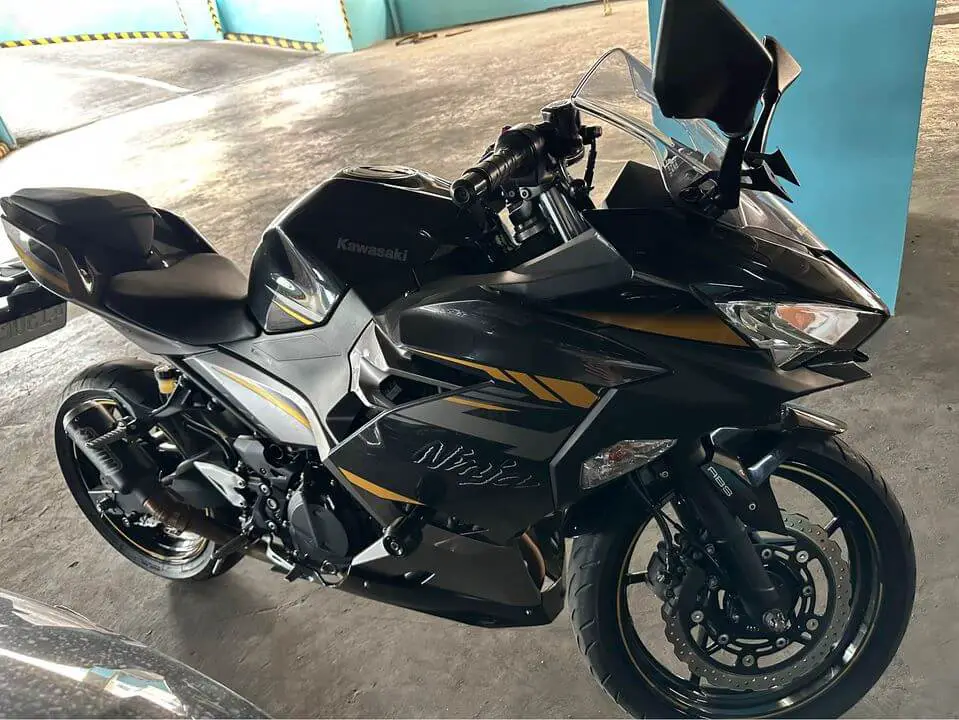
So how does Kawasaki manage to extract nearly 45 horsepower from the Ninja 400’s compact, 399cc parallel-twin engine? It starts with an oversquare engine design, featuring a 70 mm bore and relatively short 51.8 mm stroke. This enables the engine to safely spin to higher rpms to generate maximum horsepower.
In fact, peak horsepower comes in at a lofty 10,000 rpm before meeting the 10,500 rpm redline. Clever engine design, including DOHC and the valve angle between intake and exhaust valves, enables unrestricted breathing at high rpms. Fuel injection tuning optimized for low-end and mid-range power keeps the ride smooth and manageable.
This free-revving twin puts out a healthy 27 lb-ft of torque at 8,000 rpm. While not a torque monster, the smooth, linear delivery enables riders to keep the Ninja 400 in the meat of its narrow powerband. Minimal vibration allows for sustained high rpm operation. Consider installing a full exhaust system for even quicker acceleration.
Aerodynamics And Ergonomics Support High-Speed Riding
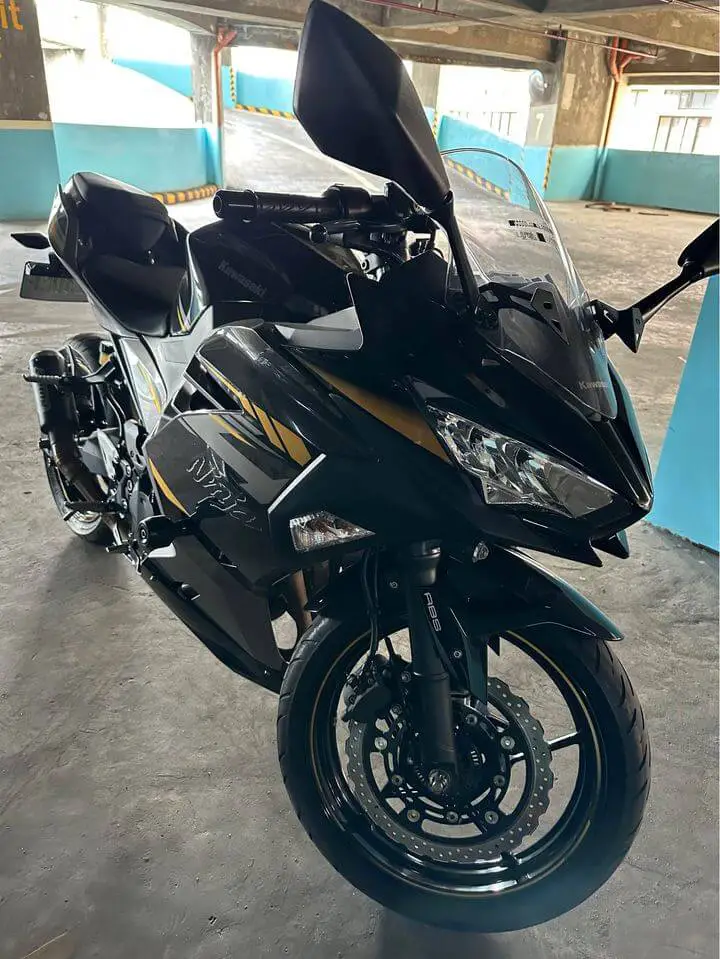
The Ninja 400 strikes an ideal balance between aggressive supersport aerodynamics and an upright, spacious riding position well-suited for daily usability. The clipped windscreen and ample fairing keep wind blast at bay, allowing effortless 80+ mph cruising. Curvy bodywork and vents reduce turbulence and heat for greater comfort at speed.
The sporty riding position features rearset footpegs and clip-on handlebars mounted to the top of the fork tubes for light, responsive steering at speed or around tight bends. This attentive stance enables your body to influence the 361-pound machine beneath you. The slightly forward lean combined with the 30.9-inch seat height suits a range of rider sizes while allowing legs to grip the tapered tank.
Gearing Enables Impressive Top Speed
While 44.8 horsepower may seem modest compared to liter-class superbikes, the Ninja 400 is geared to make efficient use of those ponies. A tall 6th gear has the parallel twin screaming near redline at highways speeds, allowing adrenaline-inducing velocity.
Lower gears offer snappy throttle response and urgent acceleration for slicing through urban traffic or attacking backroad sweepers. The smooth assist and slipper clutch prevents rear wheel hop during hard downshifting while reducing lever effort.
Mated to the engine is a 6-speed gearbox that enables the Ninja 400 to achieve a tested top speed of 116.7 mph – very quick for a 399cc machine. The bike still has pull at highway velocities thanks to optimum gear ratios. Quick acceleration is helped by the slipper clutch when banging downshifts.
Nimble Chassis Promotes Confidence at Speed
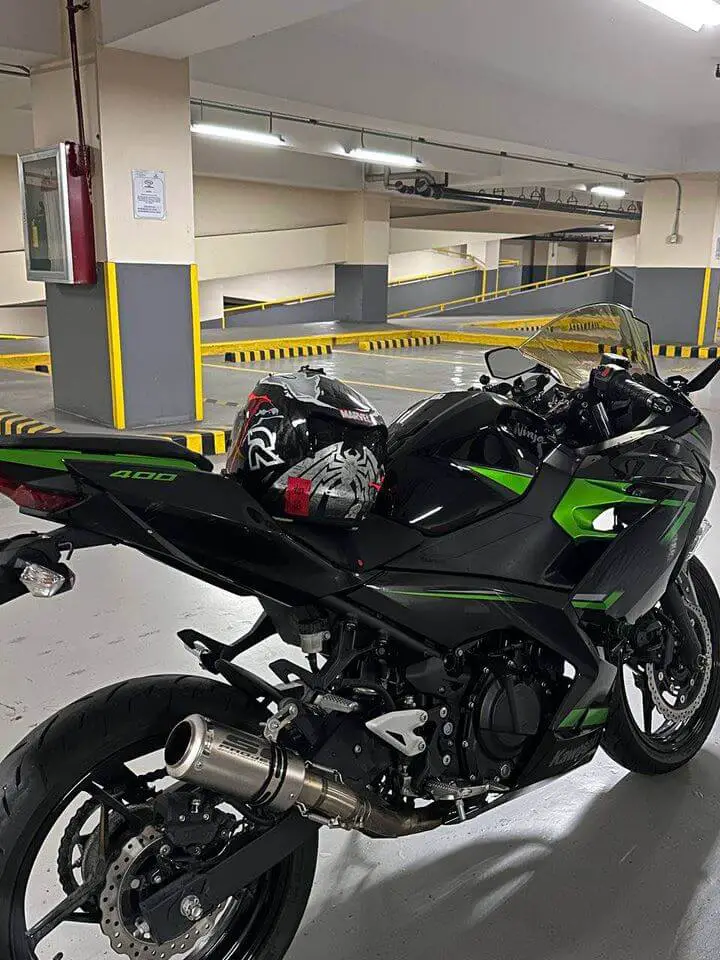
Underpinning the Ninja 400 chassis is a lightweight, high-tensile steel trellis frame and aluminum swingarm. Weighing in at a feathery 361 pounds wet, the Ninja 400 changes direction eagerly and holds lines precisely through high-speed sweepers.
Suspension duties are handled by 41 mm telescopic forks offering 4.7 inches of well-damped travel paired with a Uni-Trak mono-shock featuring 5-way preload adjustment. The set up delivers remarkably plush compliance over broken pavement while limiting chassis pitch and dive under hard acceleration and braking.
Slowing things down are a Nissin 2-piston caliper and 310 mm petal disc up front, with a 220 mm rear. Anti-lock brakes add critical confidence when braking at speed in less-than-ideal conditions. The ABS can not be switched off.
17-inch wheels wrapped in sporty rubber put the power down effectively while maintaining precise steering feedback. The Dunlop Sportmax tires offer impressive grip when cornering at speed.
Factors Impacting Ninja 400 Top Speed
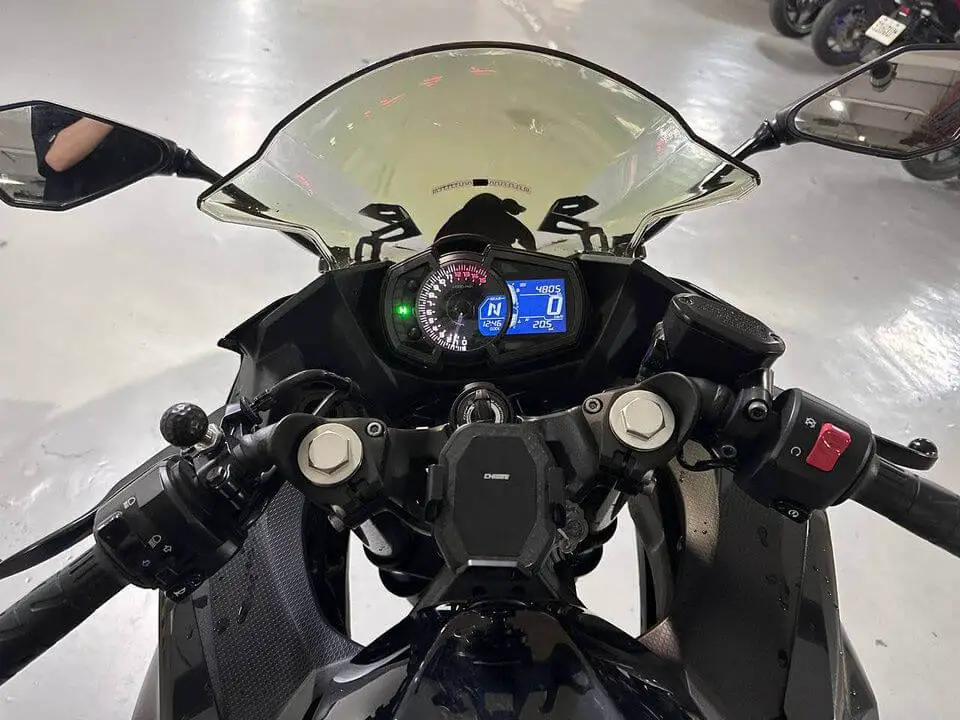
As with any motorcycle, real world top speed depends heavily on conditions and rider technique. Our 116.7 mph figure was achieved in ideal conditions by a professional test rider. Realistic top speed expectations may be 10-15 mph lower in normal use. Critical factors include:
- Rider weight – Heavier riders increase overall mass requiring more power to achieve speed.
- Headwinds – Battling wind reduces momentum and hampers acceleration.
- Tailwinds – Strong winds from behind can boost top speed slightly.
- Road conditions – Rough pavement increases rolling resistance slowing acceleration.
- Rider position – Sitting upright to catch wind will prevent hitting top speed.
- Gearing – Slight gearing adjustments can optimize for top speed.
- Tire pressure – Ensure tires are inflated appropriately for riding weight.
- Clutch slippage – Hard launches put extra load on clutch plates reducing acceleration.
Comparison of Top Speeds for Kawasaki Ninja Sportbikes
| Model | Top Speed |
|---|---|
| Kawasaki Ninja 400 | 116.7 mph (188 km/h) |
| Kawasaki Ninja 650 | 130 mph (209 km/h) |
| Kawasaki Ninja 400 (without limiter) | 125 mph (201 km/h) estimated |
| 2020 Kawasaki Ninja 400 | 105 mph (168 km/h) |
| 2018 Kawasaki Ninja 400 | 119 mph (191 km/h) |
| Kawasaki Ninja 300 | 110 mph (177 km/h) |
The table above shows the top speeds of several Ninja sportbikes from Kawasaki, ranging from the small displacement 296cc and 399cc parallel-twin models up to the more powerful 649cc parallel-twin bike.
As expected, the larger displacement Ninja 650 leads with the highest top speed of 130 mph. Removing the electronic limiter from the 399cc Ninja 400 releases a bit more top-end, with owners reporting reaching around 125 mph.
Interestingly, the top speed has remained very similar on the Ninja 400 over recent model years, hitting approximately 116 mph. The older 296cc Ninja 300 maxes out at about 110 mph, showing the impressive gains moving up to the re-tuned 399cc parallel-twin.
So while the tiny Ninja 400 gives up some mph to its bigger 649cc sibling, it still offers incredible performance relative to its size and cost. Impressively close to the flagship 650, highlighting Kawasaki’s engineering prowess.
Ninja 400 vs the Competition
The Kawasaki Ninja 400 compares favorably to other lightweight supersports in terms of engine performance and cost of ownership:
- Yamaha YZF-R3 – Slightly less peak power but more midrange punch. Quicker steering but less stability. [[Top speed limited to 112 mph]].
- Honda CBR500R – Smooth parallel twin makes 47 hp allowing 115 mph top speed. Relaxed ergonomics better suited for street use.
- KTM RC 390 – 44 hp single cylinder is high revving but peaks early requiring constant gear changes. Price undercuts Ninja 400.
- [[Ninja 300]] – Predecessor makes only 39 horses resulting in lower 106 mph top end. Beginner friendly with modest power increase over 250 class.
While rivals like the KTM and Honda edge out the Ninja’s top speed slightly due to displacement differences, none can match the complete package Kawasaki offers blending speed, handling, styling, reliability, and value.
Ways to Increase Ninja 400 Top Speed
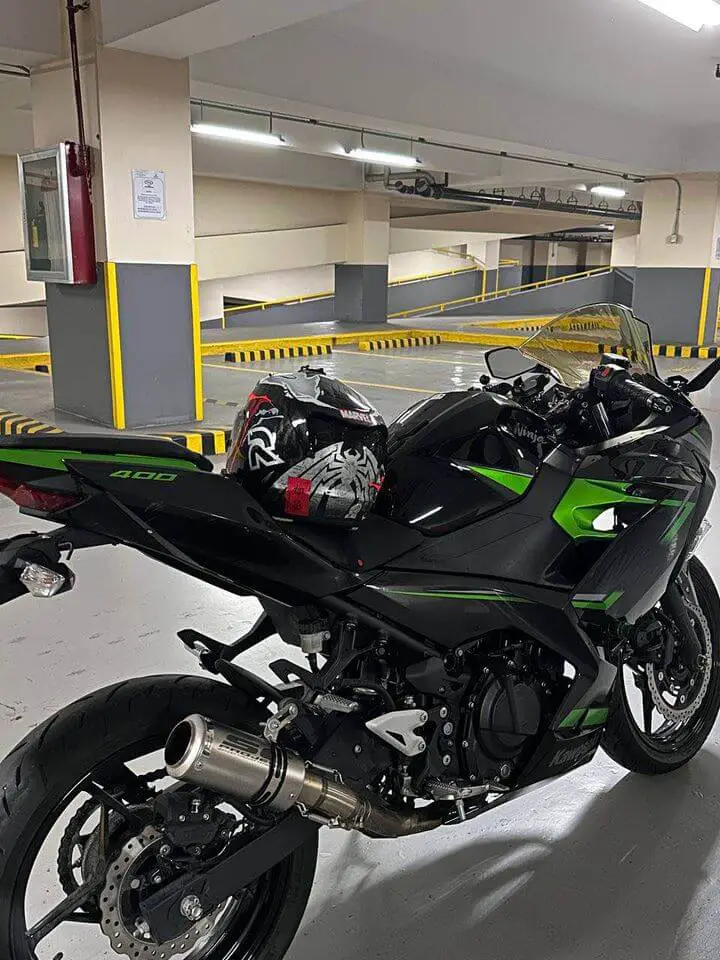
For riders chasing maximum velocity, consider these modifications to eke out a few more mph:
- Full exhaust system – Aftermarket slip-ons and mufflers reduce weight and boost power.
- EFI tuning – Custom fuel injection maps optimize performance across the rev range.
- Cams – More aggressive cams combined with valve spring swaps extend powerband.
- Sprocket change – Larger front sprocket sacrifices some acceleration for higher top speed.
Keep in mind top speed mods often compromise low end power, rideability, and reliability. We recommend keeping performance enhancements mild to keep the friendly 400cc twin running smoothly. Consider moving up to the Ninja 650/650R for more intense speed enhancements.
Ninja 400 Strengths And Weaknesses
Strengths
- Class-leading power from 399cc twin promotes 116 mph top speed
- Confidence inspiring handling and braking performance
- Comfortable ergonomics for long rides
- Outstanding reliability and low cost of ownership
Weaknesses
- Beginners may find power and sensitivity intimidating
- High strung engine demands constant rpm attention
- Limited highway passing power
- No adjustable suspension or electronic rider aids
What Owners are Saying About the Ninja 400?
“I’ve hit an indicated 116 mph on my Ninja 400 completely stock. Power starts falling off over 110 but it still has enough steam to hit 115.”
“It’s scary fast for a small displacement bike. Twisty backroads and track days suit it perfectly. Highway cruising leaves a bit to be desired but it has enough juice to get to 80 mph without much drama.”
“It lacks the midrange punch of my last Parallel twin but loves to scream up near redline. Light weight makes direction changes almost telepathic.”
“I’m still fast enough to scare myself coming into hot corners. Brakes could use an upgrade for repeated hard use but they stop fine under normal riding.”
“The Ninja 400 is way faster than it has any right to be with just 45 horses. Ultra flickable in tight sections of road.”
Conclusion
Kawasaki struck a winning balance with the feathery Ninja 400, wrapping a high revving 44.8 horsepower parallel twin in a lightweight chassis with sportbike geometry. The result is thrilling performance that comfortably exceeds highway speeds and carves canyon roads with aplomb.
While lacking the straight line grunt of larger bikes, rpm becomes your best friend as the mini Ninja screams to its 10,500 rpm redline in each gear, motivating the bike to a GPS verified 116.7 mph top speed during testing. Clever gearing, aerodynamics and an unintimidating riding position enable maximum velocity for riders brave enough to fully exploit this bike’s performance potential.
Novices will still find the Ninja 400 plenty exciting while gaining confidence in their riding abilities before upgrading to more powerful machines. Experts will cherish the Kawi’s telepathic handling, eager throttle response up top and forgiving brakes. Meet your new riding partner by visiting your local Kawasaki dealer and taking a Ninja 400 for a spirited test ride today!
frequently asked questions (FAQs) about the Kawasaki Ninja 400 top speed
What is the top speed of the Kawasaki Ninja 400?
The Ninja 400 is capable of reaching a tested top speed of 116.7 mph (188 km/h). This makes it one of the fastest small displacement sportbikes on the market.
What engine modifications help increase top speed?
Installing a full aftermarket exhaust system, fuel controller, more aggressive cams, and engine re-mapping via EFI tuning can boost peak power and enable higher top speed. Gearing changes also optimize acceleration versus outright speed.
Does weight impact top speed on the Ninja 400?
Yes, a lighter rider will enable slightly faster acceleration and higher top speeds compared to a heavier pilot. Excess weight makes it more difficult to achieve peak velocity.
Is the Ninja 400 stable at speeds over 100 mph?
Thanks to its sportbike geometry, good aerodynamics and precise handling from the lightweight chassis, the 400 remains stable even at its top speed over 115 mph given dry conditions and smooth pavement.
Can a beginner handle the Ninja 400 at highway speeds?
Most beginners find the Ninja 400 very approachable even at 70 mph+ speeds. The bike offers a balanced ride between quick acceleration and a friendly power delivery new riders will appreciate as they upgrade their skills.
What kind of range/mileage does the Ninja 400 get at highway speeds?
Expect 35-45 mpg while cruising at 70+ mph on the highway. The 3.7 gallon tank allows 130+ miles between fill ups under steady high speed riding. Impressive economy from the 399cc twin.
